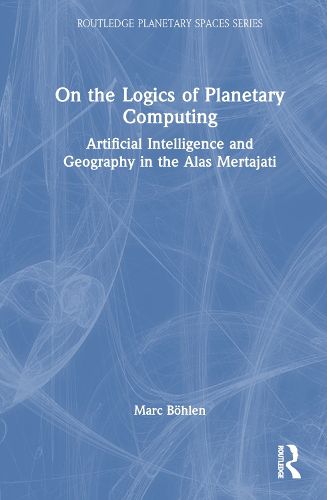Readings Newsletter
Become a Readings Member to make your shopping experience even easier.
Sign in or sign up for free!
You’re not far away from qualifying for FREE standard shipping within Australia
You’ve qualified for FREE standard shipping within Australia
The cart is loading…






A new breed of low Earth orbit satellites is making planetary-scale observation and analysis ubiquitous. This book explores how this condition feeds spatially explicit artificial intelligence, GeoAI, in redefining the study of landscapes, and how it impacts one particular land dispute in the Alas Mertajati in Central Bali, Indonesia.
This book combines scholarship from the humanities and engineering to forge a novel way of presenting planetary computing in its GeoAI vernacular. From data collection to model evaluation, the book describes how multi-spectral, high-resolution satellite data and machine learning algorithms respond to uncommon land cover conditions, including sustainable land care practices such as agroforestry while contextualizing the operations within science and media studies. Together with the installation logics-of-geoai.org, this book offers full-spectrum immersion into the unstable nexus of geography and artificial intelligence.
This book will be of interest to any experimental artist, social scientist, curious AI engineer, or a free-range scholar. It will likewise appeal to students and scholars of science technology studies, media studies, geography, and ethnography.
$9.00 standard shipping within Australia
FREE standard shipping within Australia for orders over $100.00
Express & International shipping calculated at checkout
A new breed of low Earth orbit satellites is making planetary-scale observation and analysis ubiquitous. This book explores how this condition feeds spatially explicit artificial intelligence, GeoAI, in redefining the study of landscapes, and how it impacts one particular land dispute in the Alas Mertajati in Central Bali, Indonesia.
This book combines scholarship from the humanities and engineering to forge a novel way of presenting planetary computing in its GeoAI vernacular. From data collection to model evaluation, the book describes how multi-spectral, high-resolution satellite data and machine learning algorithms respond to uncommon land cover conditions, including sustainable land care practices such as agroforestry while contextualizing the operations within science and media studies. Together with the installation logics-of-geoai.org, this book offers full-spectrum immersion into the unstable nexus of geography and artificial intelligence.
This book will be of interest to any experimental artist, social scientist, curious AI engineer, or a free-range scholar. It will likewise appeal to students and scholars of science technology studies, media studies, geography, and ethnography.